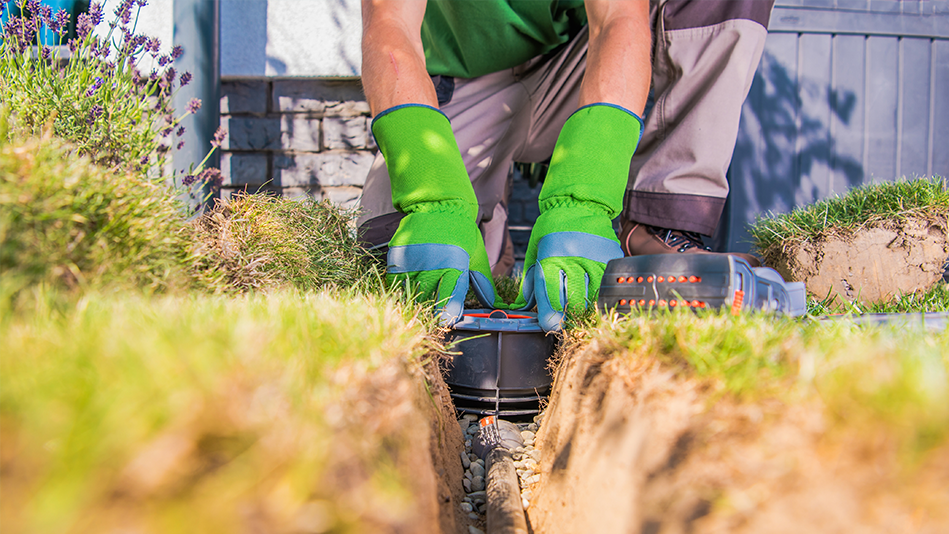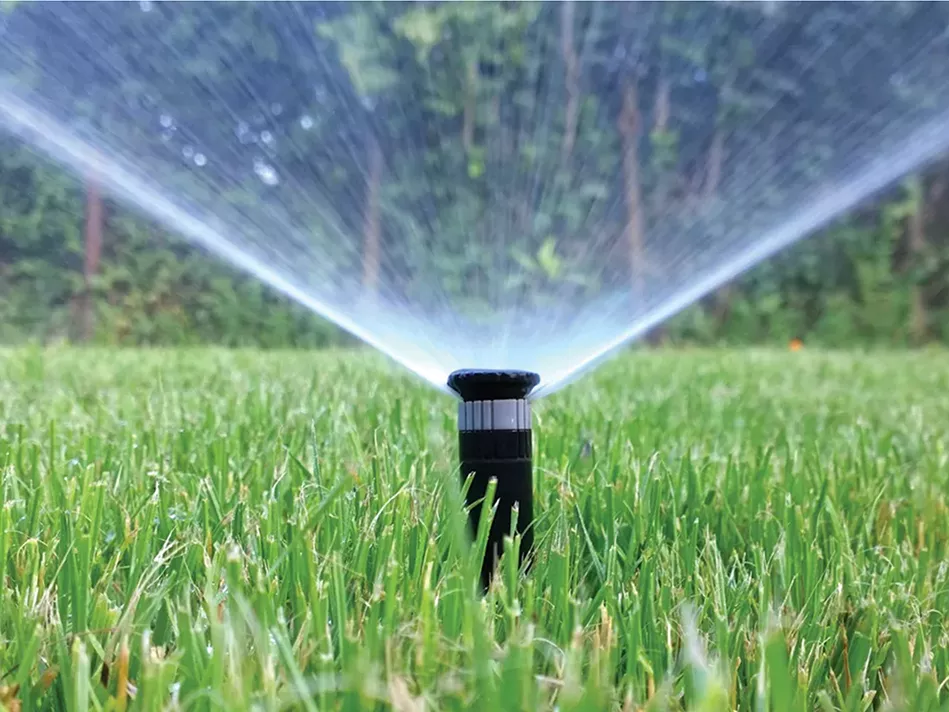One of the hallmarks of summer is seeing sprinklers at work throughout your neighborhood. After regular use, however, your sprinkler system likely needs a checkup. Use this guide to help you keep your sprinklers from having problems, so you can enjoy a healthy, green lawn for months.
Check your above-ground valves
When you notice a sprinkler issue, examine your above-ground valves – also known as sprinkler heads – first. Since most sprinkler issues start here, kicking off your sprinkler system maintenance with an above-ground valve inspection can help you spot problems quickly without spending loads of time, money, and energy on well-functioning parts of your sprinkler system.
Sprinkler system problems
Before checking the condition of your sprinkler valves, you can sometimes spot signs of malfunction, such as:
- Uneven distribution (e.g., dry or wet patches on your lawn)
- Trickling water long after the system has been turned off
- An excessively high water bill
- Unexpected changes in water pressure
Sprinkler valve problems to watch for
Whether your sprinkler valves are made of brass (which is generally more durable) or plastic, keep an eye out for these common signs of damage:
- Ripping
- Cracking
- Splitting
- Bursting

Check and clean your below-ground valves
If your sprinkler valves are located below ground, keeping them free of grime and debris is a fast and cost-effective way to maintain your sprinkler system. Simply follow these steps to keep the water flowing.
Step 1: Start by turning off the water supply before loosening the screws on the bonnet (top part) of the sprinkler valve.
Step 2: Lift the bonnet and remove the spring, diaphragm, and support ring while keeping an eye out for rips, splits, and cracks.
Pro Tip: Any item that is damaged should be fixed (if possible) or replaced altogether. This is also a good time to inspect and remove any pieces of debris in the line.
Step 3: Scrub each removed item with a rubber or soft brush, then rinse it with water as needed before replacing all the elements and screwing the bonnet back into place.
Pro Tip: Your cleaning needs will vary based upon your usage, minerals that may be in your water, and the age of the sprinkler system’s equipment.
How to replace your sprinkler solenoid
Has your sprinkler solenoid seen better days? A solenoid is an electromagnet that tells the valves when to open and close. If these magnets malfunction, they can trigger leaks or other issues that can make it much more difficult for you to have the healthy lawn you deserve. It’s typically better to repair these items than replace them; you can do so on your own or by calling a professional.
Preserve your wiring with waterproof wire connectors
Each valve comes with wire connections that keep the whole system ticking. Use waterproof wire connectors that shield these wires from water exposure so you can keep the wiring intact and help prevent your system from going on the fritz.
Many of these connectors have water-resistant substances on the inside, such as grease or silicone, as an added way to keep moisture at bay. Sometimes, however, you may still experience the effects of bad wiring. Note these potential signs of damage to your sprinkler system’s wiring and what they could represent:
- Blank timer display (faulty timer circuit wiring or a malfunctioning solenoid)
- One part of the system won’t turn on (cut dedicated wire)
- Multiple parts of the system won’t turn on (cut common wire)
- The whole system won’t turn on (issues with the master valve)
Electricity can be dangerous! It’s best to resolve any wiring issues by calling a professional.
Once you’ve applied this knowledge and gotten familiar with your sprinkler system, you’re better equipped to avoid a hefty repair bill and keep things flowing. Happy watering!
Visit us on Facebook, LinkedIn, Twitter or Instagram to tell us your thoughts!

